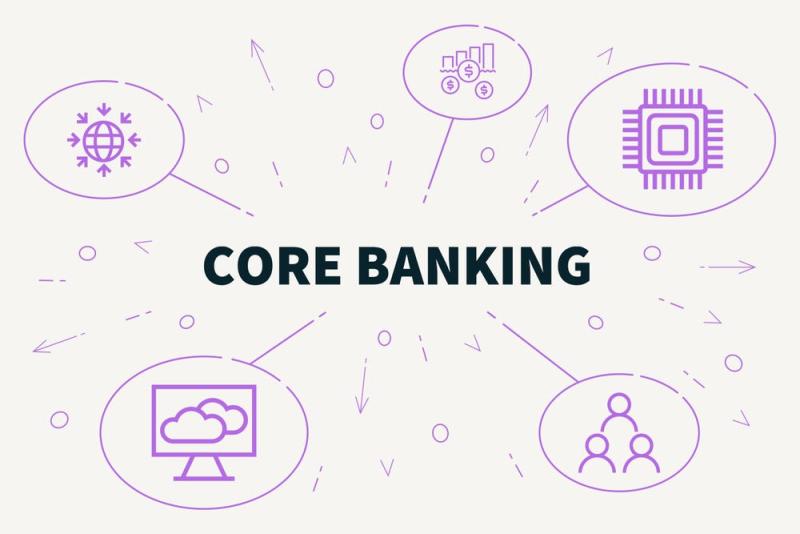Unlocking the Future of Banking with Core Banking Systems

The banking industry is rapidly evolving, driven by
technological advancements and changing customer expectations. At the heart of
this transformation lies the core banking system, a powerful tool that
modernizes banking operations and enhances customer experiences. This article
delves into the essentials of core banking systems, their significance, and how
they are shaping the future of financial institutions.
What is a Core Banking System?
A core banking system is a centralized platform that
facilitates the processing of banking transactions across multiple branches in
real time. It enables banks to manage customer accounts, loans, deposits, and
other financial products efficiently. With a robust core banking system,
financial institutions can ensure seamless service delivery, reduce operational
costs, and improve overall performance.
Key Components of a Core Banking System
- Customer
Management: Tracks customer information and account details.
- Transaction
Processing: Ensures swift and accurate processing of deposits,
withdrawals, and fund transfers.
- Loan
and Credit Management: Facilitates loan approvals, repayments, and
credit monitoring.
- Reporting
and Analytics: Provides real-time data insights for informed
decision-making.
- Security
and Compliance: Ensures adherence to regulatory standards and data
protection.
Benefits of Implementing a Core Banking System
Integrating a core banking system into financial
institutions offers numerous advantages:
1. Enhanced Customer Experience
A core banking system enables banks to offer a unified and
seamless banking experience. Customers can access their accounts, conduct
transactions, and avail banking services anytime, anywhere. This convenience
fosters customer satisfaction and loyalty.
2. Operational Efficiency
Automating banking processes reduces manual interventions,
minimizing errors and increasing efficiency. Tasks like account opening, fund
transfers, and loan processing are streamlined, enabling banks to serve
customers faster.
3. Cost Reduction
A centralized system eliminates the need for redundant
processes and manual paperwork, leading to significant cost savings. Financial
institutions can allocate resources to other critical areas, fostering growth and
innovation.
4. Real-Time Data Access
Core banking systems provide real-time access to financial
data, empowering banks to make informed decisions. Accurate data analytics help
banks understand customer behavior, tailor products, and optimize marketing strategies.
5. Scalability and Flexibility
Modern core banking platforms are designed to scale as per
business needs. Banks can introduce new financial products and services
swiftly, adapting to evolving market demands. Platforms like core banking
services offered by Skaleet enable financial institutions to innovate
continuously and remain competitive.
Core Banking Systems and Digital Transformation
Digital transformation is reshaping the banking sector, and
core banking systems are at the forefront of this revolution. Traditional
banking methods are being replaced by digital-first solutions, enabling banks
to offer personalized services and reach a broader customer base.
Role of Core Banking in Digital Banking
- Mobile
and Internet Banking: Allows customers to perform banking activities
via mobile apps and online portals.
- Open
Banking: Facilitates secure data sharing with third-party providers,
fostering innovation.
- Payment
Solutions: Integrates digital payment platforms for swift
transactions.
- Artificial
Intelligence: Enhances customer service through chatbots and
predictive analytics.
Challenges in Implementing a Core Banking System
Despite its numerous benefits, implementing a core banking
system poses certain challenges:
1. High Initial Investment
Deploying a core banking platform requires substantial
investment in technology, infrastructure, and training. However, the long-term
benefits often outweigh the initial costs.
2. Integration Complexity
Integrating a core banking system with existing banking
infrastructure can be complex. Proper planning and expertise are essential to
ensure a smooth transition.
3. Security Concerns
Handling sensitive customer data necessitates robust cybersecurity
measures. Financial institutions must prioritize data protection and comply
with regulatory standards.
Future Trends in Core Banking Systems
The future of core banking systems is marked by continuous
innovation and technological advancements:
1. Cloud-Based Platforms
Cloud computing is revolutionizing core banking systems by
offering scalability, flexibility, and cost-efficiency. Banks can enhance
agility and accelerate product launches.
2. Blockchain Integration
Blockchain technology enhances transparency, security, and
efficiency in banking operations. It reduces fraud risks and streamlines
cross-border transactions.
3. Artificial Intelligence and Machine Learning
AI-powered core banking systems automate processes, analyze
customer data, and provide personalized financial solutions. Machine learning
algorithms detect fraudulent activities and enhance risk management.
4. API-Driven Ecosystems
Application Programming Interfaces (APIs) facilitate
seamless integration with third-party applications. Banks can collaborate with
fintech startups to offer innovative products and services.
Conclusion
Core banking systems have become the backbone of modern
banking, enabling financial institutions to streamline operations, enhance
customer experiences, and drive digital transformation. As the banking
landscape continues to evolve, adopting a robust core banking platform is
crucial for staying competitive.
Solutions like Skaleet's core banking platform empower banks
to launch innovative, flexible, and scalable financial services, ensuring they
meet the ever-changing needs of customers. Embracing these advanced systems
will undoubtedly shape the future of banking, fostering growth and innovation
across the financial sector.
Post Your Ad Here
Comments